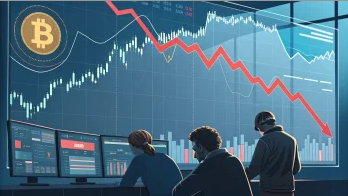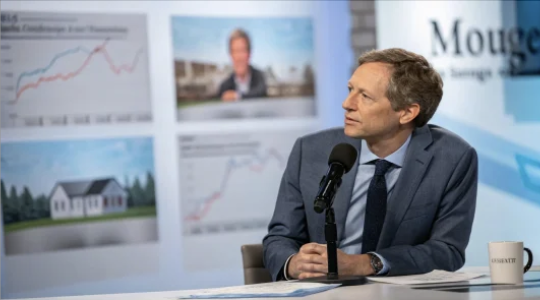When my friend bought his first house, he had no idea flooding didn’t fall under his home owners insurance. A hurricane came through and damaged his floor, windows and wiring. Without an emergency fund saved up to cover the damage, he had to fix up the wiring himself and lived with boarded up windows and warped floors for months before he managed to afford the repairs.
Whether you’re facing an unexpected hospital bill, a layoff or a really expensive speeding ticket, when you’re in fight or flight mode, the last thing you want to do is make a financial decision that could impact you for years.
Luckily, we can prepare for the twists and turns life throws our way. Emergency funds, savings accounts that you only touch when you need to pay for large, unexpected expenses, can keep a bad situation from becoming an impossible one.
A well-maintained emergency fund ensures that you have enough money to cover anywhere from 3 months to 1 year of essential expenses. Of course, you won’t get there overnight. You may want to start by saving $1,000. This may not cover everything, but it can buy you enough time to do some research, call-in reinforcements and figure out the best path forward.
Table of Contents
ToggleUnderstanding the Need for an Emergency Fund
We all know that we should expect the unexpected, but we rarely believe something unexpected will happen to us. These days, 56% of Americans say they can’t cover a $1,000 emergency, let alone something more catastrophic. An emergency fund helps you cover any unexpected expenses or keeps you afloat when you unexpectedly lose a revenue stream.
While most people think about scary medical bills and unexpected repairs when someone says “emergency,” many things constitute “financial emergencies.” A financial emergency can be anything of these (and many more):
- Losing a job or clients
- Encountering medical emergencies
- Needing home or car maintenance
- Encountering unexpected travel costs
- Being responsible for funeral costs
Being prepared for an emergency not only gives you less to handle in a difficult moment, but also may prevent you from going into debt. You might end up paying more for the expense and you could negatively impact your credit score as well as your ability to borrow money in the future.
While anyone can experience an emergency, emergency funds are particularly important if you own your own business or you work in the gig economy. Unexpected emergencies do not just cost money, they cost time. If you’re a gig worker or business owner, you may not have sick days or paid time off. Every hour you’re not working is an hour where you’re not earning. If an emergency keeps you off the job, you’re paying a double penalty.
Similarly, if you’re responsible for running your own business, a few unexpected days off could mean angry clients and a major hit to your revenue stream. Avoiding these situations takes just a little planning and a little saving.
Setting Up Your Emergency Fund
Now that you know why emergency funds matter, your next question might be, how much money do I need in it? Most experts recommend saving 3 to 6 months of regular expenses if you work a standard 9 to 5 job and 5 to 12 months for business owners. This number looks different for everyone, so you’ll need to spend some time with your budget.
In addition to calculating your monthly expenses, you may need to think about your level of risk. To assess personal risk, you might consider any these things:
- Your pre-existing medical conditions or those of family members
- Whether or not you own a car
- The stability of the economy
- Riskiness of your lifestyle
If you have a business, you may also need to consider the risks and adaptability of your endeavor.
Once you know how much you want to save, you need to know where you’re going to put it. A good emergency fund needs to be accessible, but not so accessible that you’re tempted to use it for non-emergencies, so checking accounts are probably out.
A good emergency fund also needs to be reliable which means stocks or real estate are probably not great ideas. Of course, you still want it to be gaining some value so keeping cash under a mattress isn’t ideal (although not unpopular). A high yield savings account may be your best bet.
Right now, most high yield savings accounts offer between 4% and 5% APY. As the Federal Reserve raises interest rates, saving becomes even more appealing. If you’re a business owner, you may even want to consider opening two accounts, one for your personal life and one for your business.
Strategies for Building an Emergency Fund
Knowing how much to save and knowing how to save are two different things. Luckily, if you know how much to save for your fund, you should know how much you’re spending. When you know your spending, you can begin to prioritize savings by turning your habits into a budget.
For your first-time budgeting, a 50/30/20 budget could be a good place to start. The 50/30/20 means that you use 50% of your income for daily expenses, 30% for “fun” and 20% for savings. Your 20% savings Could be divided between your emergency fund and any other savings goals. How much you need to divert to your emergency fund will depend on how much you already have saved and how much you need to save.
Once you know how much you need to set aside each month, automatic transfers are an efficient way to make sure you meet your goal. Sending the money straight into savings without ever seeing it in your checking account makes it much easier to contribute consistently and removes temptation to skip out on your contribution that month. Once money hits your checking account, it’s easy to buy one more drink at the bar, but if you don’t see it, you won’t be tempted.
If you don’t think you have enough room in your budget to prioritize savings, you can dig into your personal budget with expense tracking apps that can automatically categorize your big spending categories. Spending a ton on restaurants? Try to cut out a meal or two each month. For business owners, you might try using some of these tools to dig deeper into your business budget.
If you go through everything and can’t find a single category to cut, you can still put aside something for your emergency fund. It may seem silly but putting just $1 a week towards an emergency fund is better than nothing. You’ll have $52 after a year and with the 5% APY, you could have well over $1,000 after four years.
Overcoming Obstacles and Challenges
Once you get everything set up, you might forget why you started saving in the first place. To keep yourself motivated, it might help to write down some of the emergencies you’re most afraid of. Visualizing why you are saving makes it a little easier to keep contributing.
Inconsistent income and inconsistent spending can make saving even harder. If you don’t know how much you’ll make each week or, worse, if you don’t know how much you’ll spend, it’s hard to know how much you can set aside. In this situation, it might not make sense to pull out money automatically, but instead to pull out some savings every month.
Of course, pulling out savings every month might make motivation even harder. To keep yourself on track, set up 30 minutes or less every month to see your progress. These regular check-ins not only give you a time and place to worry about savings, but they also encourage you to keep saving by showing you concrete changes.
If looking at your finances stresses you out, and, trust me, it stresses most of us out, make it fun. Take yourself on a monthly budget date. Go to your favorite cafe or ice cream shop to make the budget seem a little more rewarding.
If you’re still nervous, find an accountability buddy. Make a date with a friend, partner or family member and go through your savings together. You don’t need to talk about how much progress you’re making, but setting a date to meet up and check on your savings makes it harder to avoid the task. It’s easy to bail on yourself. It’s much harder to bail on a friend.
Making the Most of Your Emergency Fund
If you keep up the progress for a few years, that emergency fund could start to look like a pretty great vacation fund… But you should only tap into your emergency fund when you need to.
Not all financial emergencies are dire. Sometimes they are just unexpected expenses that become emergencies if you don’t take care of them. If a snowstorm prevents you from getting home but you need to get to a job interview, you might need to dip into the emergency fund to find alternate transport and avoid unemployment. Just ask yourself, can I afford this? If the answer is “no” ask, will I be ok if I don’t spend this money?
What constitutes an emergency might look different if you get laid off. In this case you’re going to need to tap into your emergency fund for what seem like pretty regular expenses. Paying for your utilities, your rent and your food all become emergencies when you don’t have an income.
Replenish and grow your emergency fund
Tapping into your account is not the end of the story. Unfortunately, emergencies are not a one-time deal, so when you tap into your emergency fund, you’ll need to replenish it. That could mean letting your automatic transfer keep working its magic or increasing your contributions once you are out of the woods.
Even if you avoid tapping into your emergency fund, you should still check in on your fund once every few years. As you get older, you become more liable to emergencies. Whether you are looking at increasing medical expenses, additional mouths to feed or new assets, like homes and cars, your risks only increase with age.
A stable backup for an unstable world
We do not live in a stable world. People get sick or injured, cars get stolen, the economy takes a turn so your department gets laid off. None of us know what might come next. If you have an emergency fund, you can navigate these perils without sweating over your account statements or falling into debt.
Whether you start by calculating your ideal emergency fund—based on your monthly spending, type of employment and overall risk level—or by putting $1 a week into a high yield savings account, now is the best time to start.
















